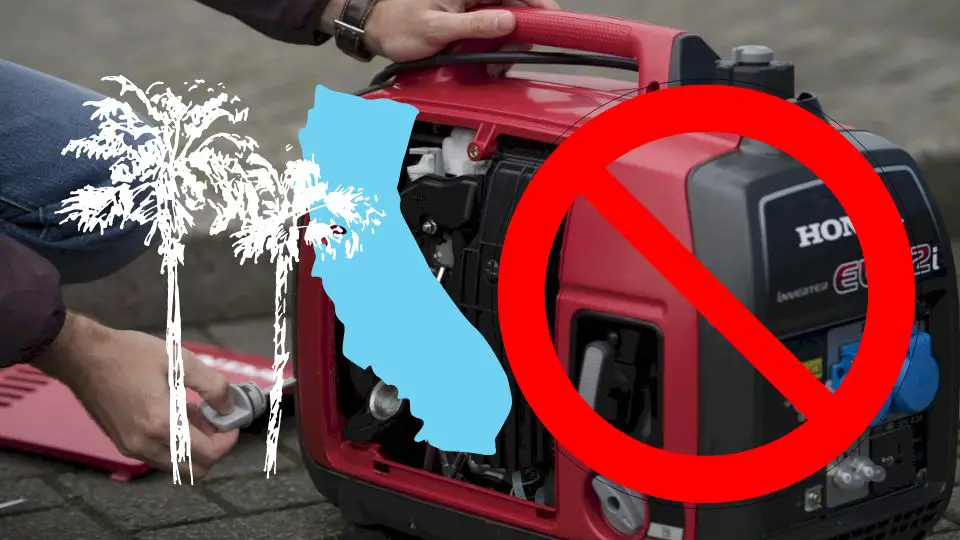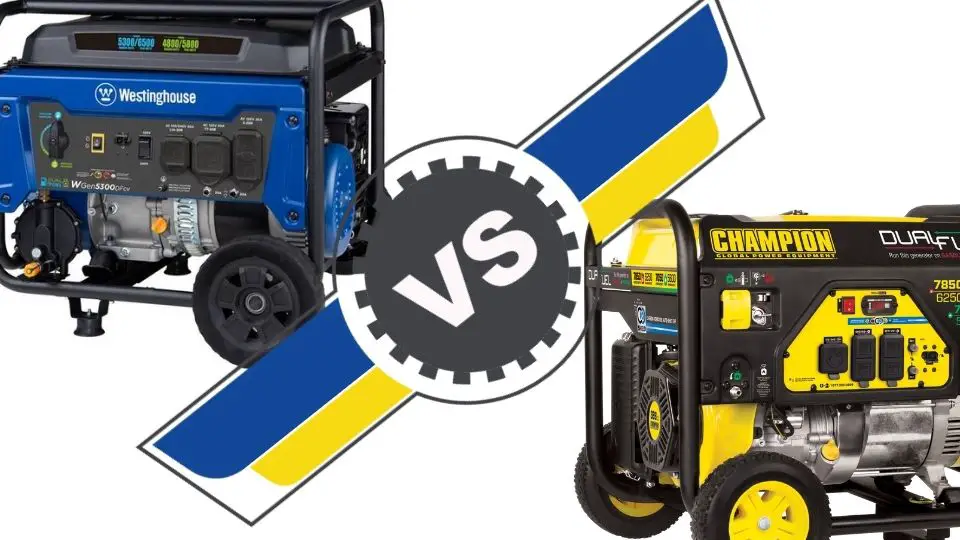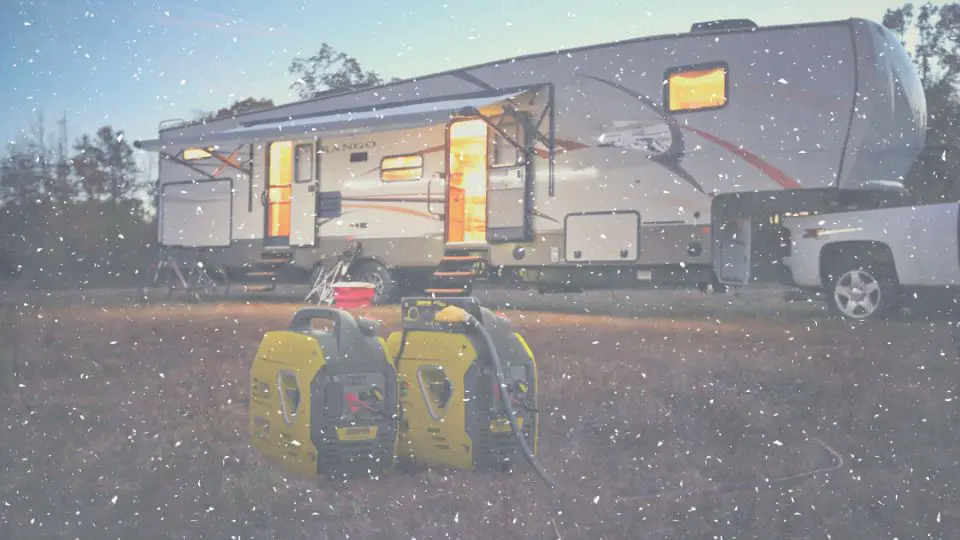This post may contain affiliate links. As an affiliate, we earn from qualifying purchases. We get commissions for purchases made through links in this post.
Generators have become an essential part of modern life, especially in regions where power outages are common. However, California has imposed strict regulations on the use and sale of generators in the state. As a result, many people are wondering why generators can’t be shipped to California.
The main reason why generators can’t be shipped to California is due to the state’s strict air pollution regulations. The California Air Resources Board (CARB) has set stringent emission standards for small off-road engines (SORE) found in gas-powered generators, lawnmowers, leaf blowers, weed eaters, and similar lawn care equipment. These standards are aimed at reducing harmful pollutants and working towards a carbon-free economy.
The regulations require manufacturers to produce CARB-compliant generators that emit significantly lower levels of carbon monoxide, nitrogen oxides, and other pollutants. Generators that do not meet these standards cannot be sold or shipped to California. Additionally, the regulations also ban the sale of gas-powered leaf blowers and lawnmowers in the state beginning in 2024. The sale of portable generators will come into effect in 2028.
CARB and California Rules
California is known for its strict environmental regulations, which are enforced by the California Air Resources Board (CARB). CARB is responsible for reducing air pollution and protecting public health in California. As part of its efforts to reduce emissions, CARB has established regulations that govern the use of generators in the state.
What is CARB?
CARB is a department of the California Environmental Protection Agency. Its mission is to promote and protect public health, welfare, and ecological resources through the effective and efficient reduction of air pollutants. CARB’s regulations apply to a wide range of sources, including vehicles, engines, and equipment.
CARB-compliant Generators
To comply with CARB regulations, generators sold in California must meet certain emissions standards. CARB-compliant generators are designed to emit fewer pollutants than non-compliant generators. This is achieved through the use of advanced emissions control technologies, such as catalytic converters and fuel injection systems.
CARB-compliant generators are identified by a label or sticker that indicates compliance with California emissions standards. It is important to note that not all generators are CARB-compliant. Generators that do not meet CARB’s emissions standards are not eligible for sale in California.
In addition to CARB-compliant generators, there are also restrictions on the use of generators during certain periods of the year. For example, during periods of high air pollution, such as during wildfires, the use of generators may be restricted to reduce emissions.
Overall, CARB’s regulations are designed to protect public health and the environment by reducing emissions from generators and other sources of air pollution. By using CARB-compliant generators, Californians can help reduce their impact on the environment and comply with state regulations.
Why Generators are Banned in California
California has recently banned the sale of gas-powered generators, which includes generators mounted in recreational vehicles, beginning in 2028. The California Air Resources Board (CARB) passed a regulation aimed at “Small Off-Road Engines” that will ban the sale of portable generators in the state. This move is part of California’s efforts to reduce air pollution and greenhouse gas emissions.
Carbon Monoxide
One of the main reasons why generators are banned in California is due to the release of carbon monoxide gas. Carbon monoxide is a colorless, odorless gas that can be deadly if inhaled in high concentrations. Gas-powered generators emit carbon monoxide, which can build up in enclosed spaces and cause carbon monoxide poisoning.
The California government has taken steps to reduce carbon monoxide emissions by enacting strict regulations on the use of generators. These regulations require that all generators sold in California meet specific emission standards to reduce the amount of carbon monoxide that they emit.
Carbon Dioxide
Carbon dioxide is another gas that is emitted by gas-powered generators. Carbon dioxide is a greenhouse gas that contributes to global warming and climate change. The use of gas-powered generators contributes to the production of carbon dioxide, which is harmful to the environment.
The California government has taken steps to reduce carbon dioxide emissions by enacting strict regulations on the use of generators. These regulations require that all generators sold in California meet specific emission standards to reduce the amount of carbon dioxide that they emit.
In conclusion, generators are banned in California due to the release of harmful gases such as carbon monoxide and carbon dioxide. The California government has taken steps to reduce the emissions of these gases by enacting strict regulations on the use of generators. These regulations require that all generators sold in California meet specific emission standards to reduce the amount of harmful gases that they emit.
What are the new California laws for generators?
California has passed new laws that regulate the use and sale of gas-powered generators in the state. The new laws aim to reduce greenhouse gas emissions and improve air quality. Here are some key points regarding the new California laws for generators:
- Ban on Sale of Portable Gas-Powered Generators: Starting in 2028, the sale of portable gas-powered generators that run under 25 horsepower will be banned in California. This means that retailers will no longer be able to sell these types of generators in the state or ship them to California.
- Zero-Emission Standards: The generators that are allowed to be sold in California must meet zero-emission standards by 2028. This means that they must produce no greenhouse gas emissions and must be powered by electricity or other non-fossil fuel sources.
- $30 Million Fund: To help businesses and individuals afford new equipment that aligns with the zero-emissions standards, the state of California has set aside $30 million.
- Limitations on the Use of Gas-Powered Generators: The new laws do not limit the use of gas-powered generators in California. However, they limit the sale of these generators. This means that people who already own gas-powered generators can continue to use them.
- Exceptions to the Ban: Not all portable generators will be under the ban. For example, generators that are used for emergency services or for powering medical equipment will be exempt from the ban.
It is important to note that the new laws are not limited to generators. The state has also banned the sale of gas-powered small single-engine off-road equipment (SORE) such as lawnmowers and leaf blowers to curb emissions. The new laws are part of California’s efforts to reduce its carbon footprint and transition to a cleaner energy future.
Can you still buy generators in California?
Yes, you can still buy generators in California. However, there are some upcoming restrictions that buyers need to be aware of. According to a new law passed by state lawmakers, the sale of certain types of generators will no longer be permitted in 2028. California became the first state in the nation to outlaw the sale of portable gas-powered generators.
It is important to note that this ban only applies to new small portable generators that run on gas. Californians who already own gas-powered generators, RV generators, and lawn equipment are still legally allowed to own and operate these items even after the bill takes effect. No new models will be sold after 2028 though.
Having said that, you will still be able to bring a small gas-powered generator from other states after 2028, but, you will have to do it in person. Online stores will not ship it to you after restrictions take effect. Your best decision is to buy it in advance, though, as you won’t be banned from using it if you already own it by 2028.
What are the regulations for emergency standby generators in California?
California has regulations for emergency standby generators to ensure that they are safe and reliable. The regulations are enforced by the California Air Resources Board (CARB) and the California Energy Commission (CEC).
The regulations cover many aspects of emergency standby generators, including emissions, fuel storage, and installation. Emergency standby generators must comply with CARB’s emissions standards, which limit the amount of pollutants that they can emit. CARB also has regulations that allow the use of backup generators during a Public Safety Power Shutoff (PSPS) event.
The CEC has regulations for temporary and emergency generation, which cover the installation and operation of emergency standby generators. The regulations require that generators be installed in a safe location and that they are connected to an automatic transfer switch that will activate the generator when the power goes out. The CEC also has regulations for fuel storage, which require that fuel be stored in a safe location and that it is contained in a spill-proof container.
In addition to the regulations from CARB and the CEC, there are also local regulations that may apply. For example, the City of Los Angeles has regulations for emergency standby generators that require them to be installed in a location that is at least 20 feet from any residential structure.
Overall, the regulations for emergency standby generators in California are designed to ensure that they are safe, reliable, and do not harm the environment. It is important to follow these regulations to ensure that your generator is installed and operated safely and legally.
Bottom line
In conclusion, portable generators will stop being shipped to California in 2028 primarily due to the state’s strict air pollution regulations set by the California Air Resources Board (CARB). These regulations require manufacturers to produce CARB-compliant generators that emit lower levels of carbon monoxide, nitrogen oxides, and other pollutants. Generators that do not meet these standards cannot be sold or shipped to California.
The regulations aim to reduce harmful emissions, protect public health, and work towards a carbon-free economy. Additionally, California has passed new laws that further restrict the sale of gas-powered generators, with a ban on portable gas-powered generators starting in 2028 and a requirement for generators to meet zero-emission standards. However, individuals who already own gas-powered generators are still allowed to use them. You will also still be able to purchase such generators in other states and bring them to California. These regulations align with California’s efforts to reduce air pollution, and greenhouse gas emissions, and transition to cleaner energy sources.



